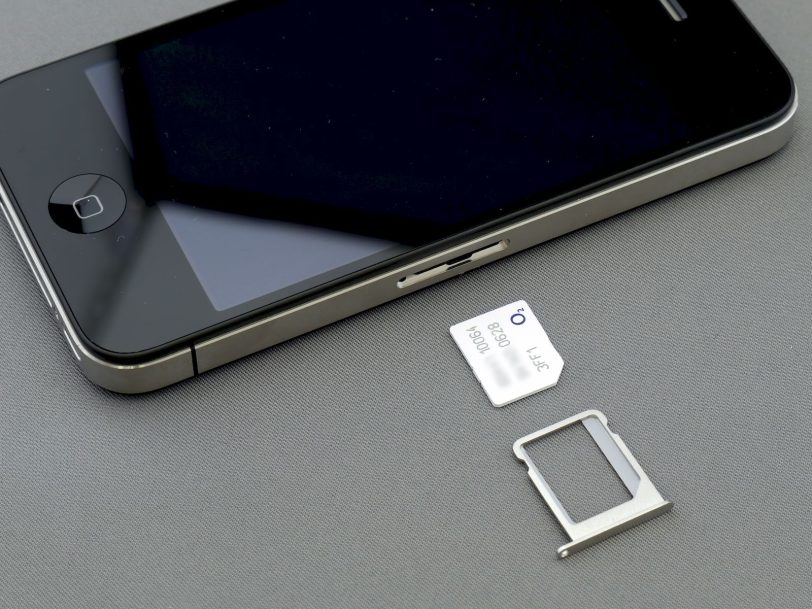How to set up eSIM on iPhone?
The eSIM is the future of the iPhone and this is how it is set up step by step, you can even change your traditional SIM for an eSIM easily.

eSIM is the future and the eSIM card has been available on the iPhone for many years. eSIM allows you to quickly switch carriers and carry multiple SIM cards in your iPhone simultaneously. The eSIM must be configured correctly as it is not “as easy” to insert it as a traditional SIM, although the steps are quite simple.
What is an eSIM?
An eSIM is an electronic SIM card, which is industry standard. This card replaces the traditional SIM card and has the same functions as it, without the need for physical support.
One of its main advantages is the rapid change of operator, being able to have several eSIMs configured and use the one you need at any time. It is also a very interesting option to contract a data rate abroad during a trip.
What iPhone models are compatible with eSIM?
The eSIM card came to iPhone with the iPhone XS, iPhone XS Max, and iPhone XR generation, and all subsequent models support e-SIM.
- iPhone XR
- iPhone XS
- iPhone XS Max
- iPhone 11
- iPhone 11 Pro
- iPhone SE (model 2020)
- iPhone 12 Mini
- iPhone 12
- iPhone 12 Pro
- iPhone 12 Pro Max
- iPhone 13 Mini
- iPhone 13
- iPhone 13 Pro
- iPhone 13 Pro Max
- iPhone SE (model 2022)
- iPhone 14
- iPhone 14 Plus
- iPhone 14 Pro
- iPhone 14 Pro Max
Which operators offer eSIM?
In each country we have different operators that offer the eSIM service, you can check it on the Apple website.
Configure the eSIM of the iPhone step by step
Setting up an eSIM on the iPhone is a fairly easy step. If you are setting up the iPhone for the first time, when you get to the operator step you can directly set up a new eSIM. But if you’re going to set up an eSIM on an iPhone that’s already set up, follow these steps:
- Go into the Settings of your iPhone.
- Enter the Mobile data section.
- Tap on Add eSIM.
- Press Scan QR code and focus on the code provided by your operator.
- Follow the instructions to finish setting up the eSIM on the iPhone.
Transfer a physical SIM or eSIM to a new iPhone
One of the iPhone options starting with iOS 16 can transfer a physical SIM or an eSIM from an old iPhone to a new one. To do so you must follow these steps.
- On the new iPhone, go to Settings > Cellular Data > Add eSIM.
- Tap on Transfer from nearby iPhone.
- Keep the other iPhone nearby, unlocked and with Bluetooth turned on.
- Follow the instructions on the iPhone above to confirm the transfer.
Convert a SIM to an eSIM
Yes, the iPhone is capable of converting a traditional SIM to an eSIM. However, not all carriers allow this feature, as most will charge you to activate an eSIM. This option is called “Fast eSIM Transfer” and it allows you to either convert a SIM to an eSIM or transfer a SIM to another iPhone by transforming it into an eSIM.
How to use dual SIM with an eSIM
One of the advantages of setting up an sSIM is the ability to have two cards on the same iPhone. Being able to choose which number to use to call or which data plan the iPhone should use by default.
How to change the default SIM for calling on the iPhone
Having two SIMs in the iPhone, you can choose which of the two cards to use by default for your calls.
- Go to Settings.
- Touch Mobile data.
- Default voice line.
If with a contact you prefer to use a default number, enter Contacts, click on that contact and in Preferred mobile plan choose the number from which you want to call them by default.
How to change the SIM for mobile data on the iPhone
In the same way, you can use a default mobile data plan, to configure it follow these steps:
- Go to Settings.
- Touch Mobile data.
- Touch Mobile data.
- Touch the number you want to use for mobile data.
The eSIM is a logical step in the iPhone and smartphones and in not many years it will be the only option. In fact, in the United States it is already beginning to be a trend that will continue in most countries.